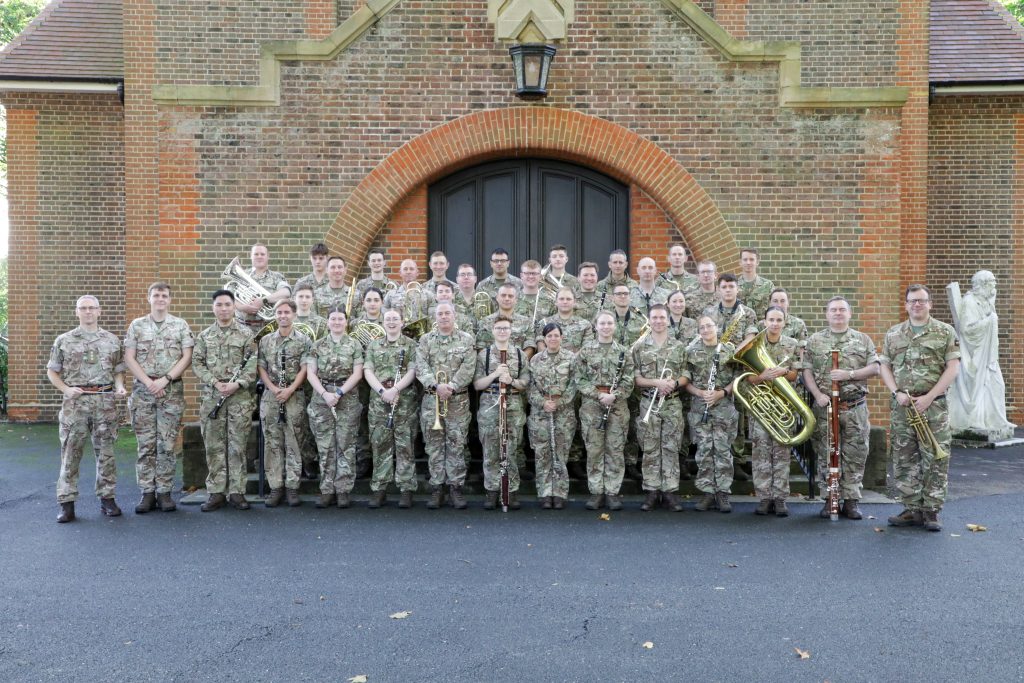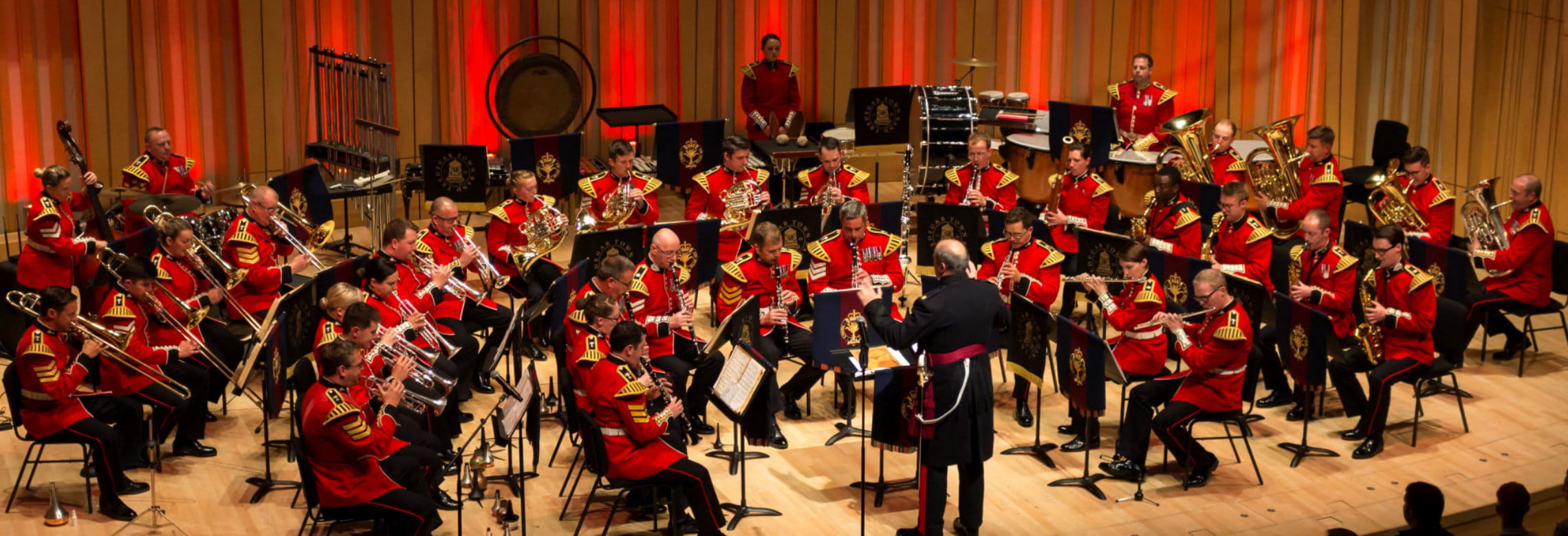Irish Guards Band
The Band

The Band of The Irish Guards was formed on 1st April 1900 to commemorate the bravery of the many Irish Regiments, which fought in the South African Campaigns. Under the direction of its first Bandmaster, Warrant Officer Charles Hassell, the Regimental Band made its first public appearance the following year. The Band quickly gained a reputation for excellence as evidenced by the glowing press reports in 1905, for what turned out to be the first of many tours of Canada. The citizens of Toronto were so impressed with its performance that they presented the Band with an ornate silver cup, which to this day remains one of its cherished possessions.
Over the years the Band has toured extensively and has also made numerous appearances on television and in films, including The Ipcress File and Oh! What a Lovely War, as well as being engaged to whistle Colonel Bogey for the soundtrack of The Bridge on the River Kwai.
The Band is based at Wellington Barracks in London and provides the musical support for major ceremonial events in London and Windsor.
RCAM 30 Legacy Recordings
Celtic Knots – Goff Richards

Celtic knots are strongly associated with Irish culture and their primary characteristic is that they have no obvious beginning or end. The composition Celtic Knots, composed by Goff Richards, reflects the character of their namesakes as the melodic themes interweave one-another. The piece finishes, much as it begins, evoking the sense of the continuous, eponymous knot.
Singalongamix – Michael Henderson

Singalongamix (‘Mick’s March’) and Carrickfergus were both arranged by former Irish Guards Director of Music, Major Michael Henderson. Singalongamix consists of traditional Irish songs, including Whiskey in the Jar and Star of County Down, and was performed for Her Late Majesty The Queen during the 1996 Trooping the Colour Parade. Both Singalongamix and Carrickfergus are still frequently performed by the Band, not least at the annual 17th March Regimental celebration of St Patrick’s Day.
Carrickfergus – Michael Henderson

Carrickfergus was originally arranged as a Slow March, to be used during marching displays. It was first performed in 1995 at a Beating Retreat Ceremony at Carrickfergus Castle to commemorate the 50th Anniversary of the VJ Day celebrations.
